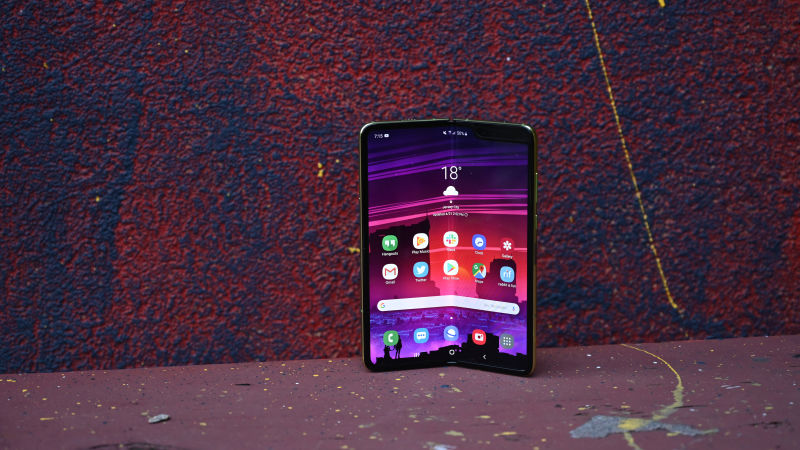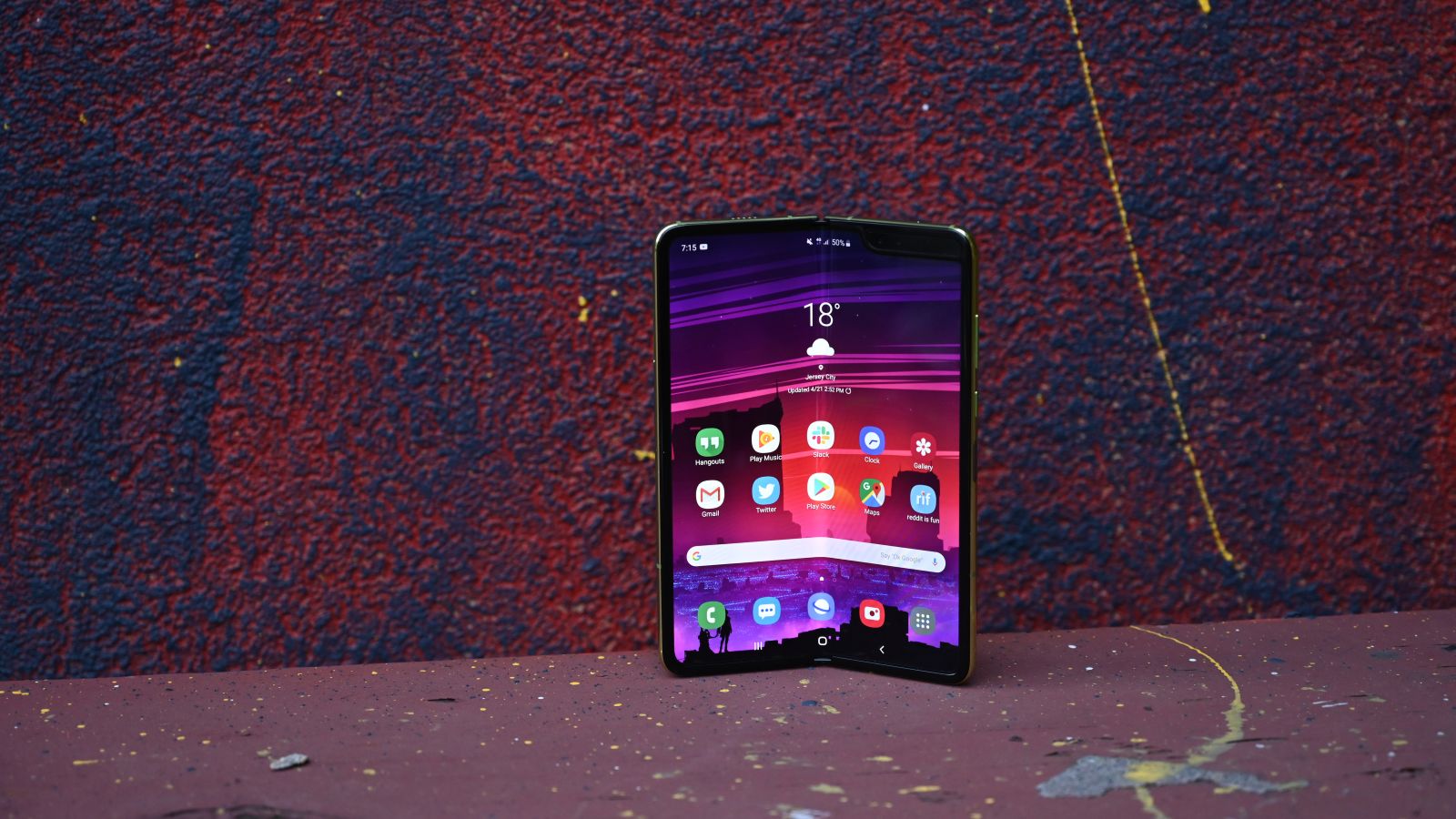
Our friends at CNET just wrapped up an ambitious and scientifically suspect test on the Galaxy Fold. Samsung says the device will survive 200,000 folds, so the gadget testers got their hands on a machine that could open and close the device quickly and endlessly. Long story short, the Galaxy did not survive 200,000 folds, but it did get impressively close.
The test ended around 120,000 folds, when half of the device’s screen went dark and the hinge appeared to be failing. According to Samsung’s own logic, this would represent close to three years of use. Skeptics would say that a futuristic device that costs nearly $2,000 should last a decade or at the very least live up to Samsung’s state 200,000 fold rule. But let’s be real. Putting anything in a this folding machine for 14 hours would destroy it!
In many ways, the Galaxy Fold’s failure in the CNET test actually represents a big win for folding OLED displays. After all, this machine didn’t really come close to what daily use of the device would look like. The folds seemed particularly aggressive, and the repeated use undoubtedly strained the Galaxy Fold’s internals more than any user ever would. Just think about how bending metal back and forth makes it heat up and break, and then imagine doing that over 100,000 times. The fact that the Galaxy Fold did this well—and that it’s one of the first folding OLED devices on the market ever—means that the future might be very bright for this sort of technology.
This test also comes after Samsung delayed the Galaxy Fold due to repeated reports of failures and defects from reviewers. Samsung revealed an updated design last month, and that’s the device that CNET put through the gauntlet. Although we initially saw some reports that the Galaxy Fold’s display is still fragile, it now appears that there might be hope after all. Now just imagine what this thing could do if you weren’t actively trying to break it.

















The internet isn’t breaking | Opinion